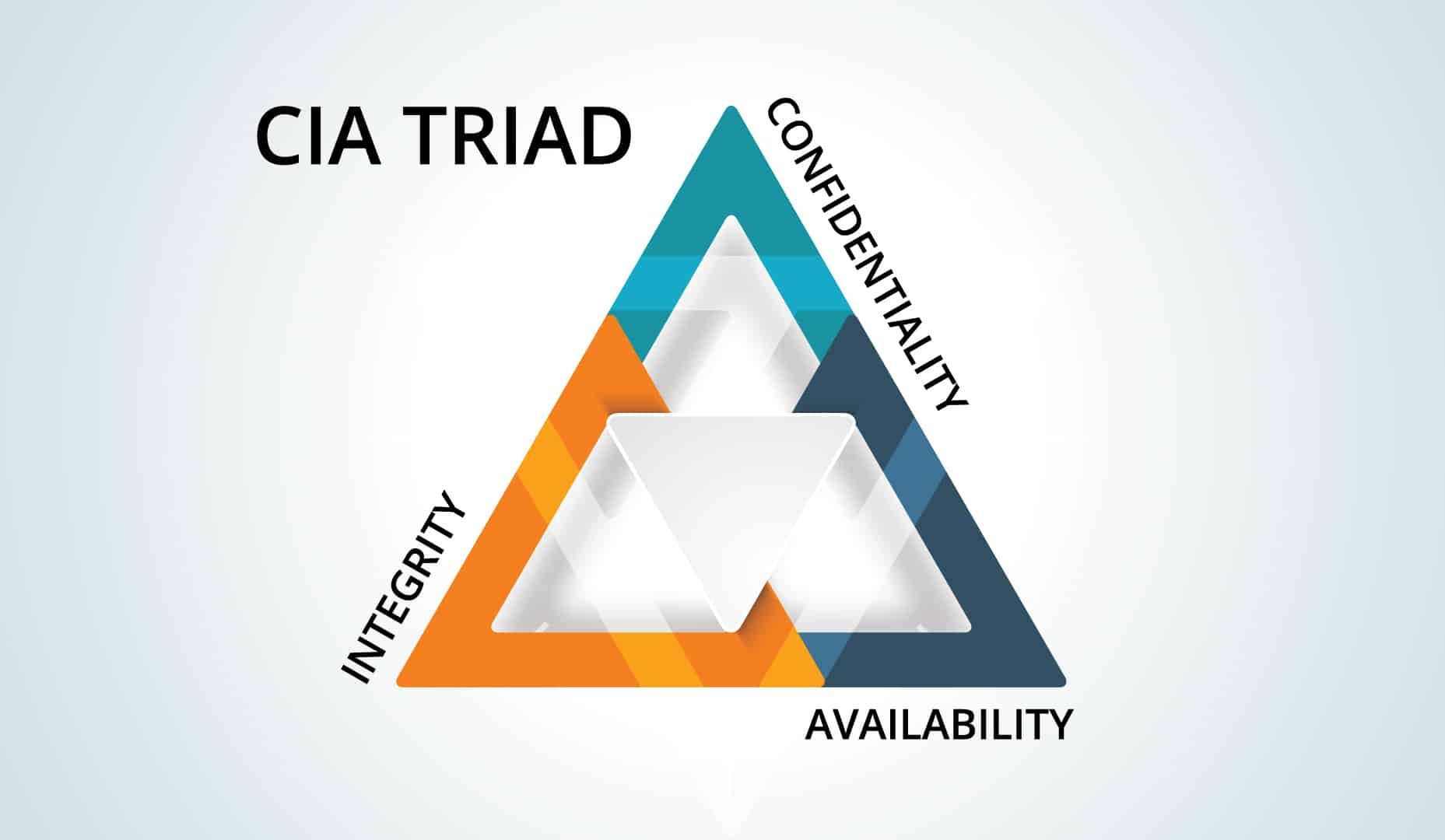A dark alley, a lone figure waiting to give you an unopened letter that starts…
Your mission, should you choose to accept it, is to…
Wait, not that kind of spy situation? Isn’t that what the CIA does?
No, not the Central Intelligence Agency, we’re talking about the CIA Triad.
Although the CIA Triad sounds like a super cool exclusive club or spy organization that we all might want to be invited to like MI6 or The Kingsmen, it’s actually a model designed by information security professionals to help organizations visualize, strategize and implement cybersecurity infrastructure specific to the organization’s needs.
CIA Triad Explained
The CIA triad was designed to help organizations develop policies to protect their information. The model has three components: availability, integrity, and confidentiality. Organizations can use the CIA triad to assess their own security needs and identify areas where they need to improve. Sometimes referred to as simply the “triad,” this model is essential for any company or institution seeking to protect its data.
Let’s explore each concept of the triad.
- Confidentiality – Synonymous with privacy, classification, and secrecy. This concept is designed to make sure only authorized users are able to access sensitive data. Depending on the type of data more intense security measures can be enforced to keep it out of the hands of those who will misuse it.
- Integrity – Or trustworthiness. The data you do have must be kept clean to ensure accuracy. Data can be purposefully or accidentally altered but either way, this can cause distrust among existing clients and potential customers. Unreliable data is one way to ruin a company’s reputation.
- Availability – We’ve established confidentiality and integrity in the organization, but if the data isn’t readily accessible then unfortunately it’s useless. The network, systems, and applications must be functioning properly and consistently. In addition, the data must only be available to those authorized to consume it.

Applying the Concepts
This is by no means an exhaustive list of the different concepts that can be employed concerning the utilization of the triad – any one of these could be expanded upon and elaborated upon.
Confidentiality
- Awareness and training for those with access to sensitive information
- User access controls
- Password-related best practices
- Two-factor authentication
- Biometric verification
- Data encryption
Integrity
- Encryption
- Hashing
- File permissions
- Version control to prevent accidental alterations
- Digital signatures for evidence of logins and sends
- Backup and recovery software
Availability
- Timely updates
- Repairs
- Redundancy
- Disaster recovery
- Backups
- Firewalls
- Proxy servers
An Example of the CIA Triad
An ATM machine is a good example of how the CIA Triad works in practice:
- With two-factor authentication, confidentiality is addressed and sensitive data is protected by using a debit card with a PIN code. This PIN code makes sure that only authorized individuals will have access to financial account information.
- ATMs and bank software help maintain data integrity by keeping records of all ATM transfers and withdrawals in a user’s bank account. This helps ensure that information is accurate and up-to-date.
- ATMs are available (availability) for public use and are accessible at all times. This provides convenience and flexibility for users.
Why the CIA Triad is Important
The CIA Triad is a simple but comprehensive list that aids the creation of cybersecurity infrastructure (Something that has been in the news quite a bit as somewhat of an issue amongst many industries).
Organizations can use the CIA triad to evaluate their incident response plan in case of a cyber breach. This triad is helpful for navigating sources of vulnerabilities and understanding what went wrong after a network security compromise.
If there was a breach and confidentiality was to blame because of a phishing email attempt, but integrity and availability remained functional then the organization can focus its efforts on awareness and training for employees. Thus why it’s called a checklist.
When all three standards have been met the cyber security posture of an organization is better equipped to mitigate and manage threats.
The bottom line is that organizations should be using the CIA Triad as a framework to build their cyber security infrastructure, focusing on continuous improvements to each concept of the triad. Help from MDR/XDR providers can make that task less daunting, more efficient, and cost-effective.



